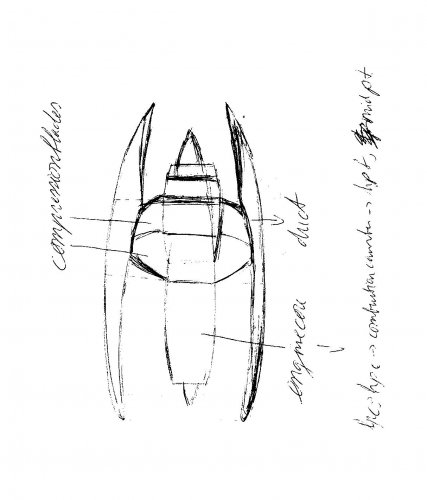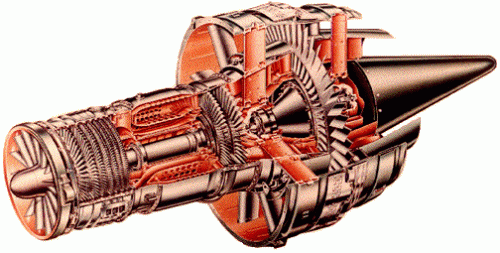It would work like this:
The entire engine will be ducted, it will look like an normal aircraft engine, except the duct will be longer at the end to make reverse thrust possible.
You have an engine core at the front, So: Intake -> Low-pressure compressor -> High-pressure compressor -> High-pressure turbine -> 2nd High pressure turbine (to drive the low pressure compressor, but it those this with less blades) -> The low(er)-pressure compressor (which drives the fan/compressor blades).
The fan/compressor-blades are ducted to make compression able, which, to my opinion, could give leaner combustion because:
- You will have a weight decrease
- The fan/compressor-blades can turn at their own most efficient rate.
- The core is only build to give high-pressure air, so it can be made smaller, lighter (you will miss the third (or in case of rolls royce fourth) axis), and totally specialized for the lean combustion.
What do you think?
The entire engine will be ducted, it will look like an normal aircraft engine, except the duct will be longer at the end to make reverse thrust possible.
You have an engine core at the front, So: Intake -> Low-pressure compressor -> High-pressure compressor -> High-pressure turbine -> 2nd High pressure turbine (to drive the low pressure compressor, but it those this with less blades) -> The low(er)-pressure compressor (which drives the fan/compressor blades).
The fan/compressor-blades are ducted to make compression able, which, to my opinion, could give leaner combustion because:
- You will have a weight decrease
- The fan/compressor-blades can turn at their own most efficient rate.
- The core is only build to give high-pressure air, so it can be made smaller, lighter (you will miss the third (or in case of rolls royce fourth) axis), and totally specialized for the lean combustion.
What do you think?


